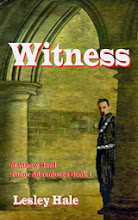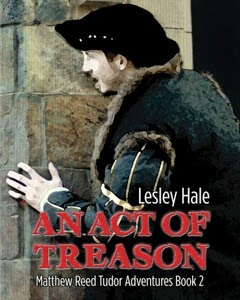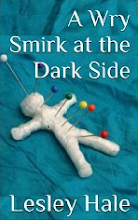Our route north to the Danish border
Windmills feature a lot on this coast - these are near Itzehoe
To get there we first had to cross the river Elbe, which is here so broad that the ferry from Wischhafen to Glückstadt took a good 20 minutes, swinging out wide into the current and dodging sandbanks and huge freighters before another S-shape glide brought it to the landing point on the northern shore.
The landscape was not so different, and the farmhouses had changed only subtly, having lost much of the timber-framing in the gable ends but gaining more windows. After Itzehoe we passed through a pretty area of undulating countryside and frequent woods, and again another part of Norfolk – the north west - flashed through our minds. Our vocabulary for describing flat, familiarish north European landscapes has been shaped by the lands either side of the Wash.
Local wildlife - Stork near Kiel Canal
We decided to seek out a stellplatz by the Kiel Canal, as shown in our Reisemobil Stellplatz guide, but when we arrived at the designated co-ordinates (always pronounced “company-ordinates” by Garmintrude which provokes Rob to bemoan the poor level of testing by the IT team who developed the program), there was no sight of it, bar perhaps a blocked off and weed-infested field entrance near the Satnav co-ordinates. Yet, curiously or consequently, a number of German motorhomes were parked up in unused access ways to the Kiel Canal half a kilometre away, forming an unofficial stellplatz over three separate pieces of asphalt. There was nothing else around and it didn’t take long to decide to join them. We ended up with a prime spot where we watched the big ships go gliding by (acknowledgements to Doctor Feelgood for that line) way into the evening, for the sky still sported a warm glow until midnight.
There is something transfixing about watching these huge vessels slip silently through the meadows only meters from where you sit. The Kiel Canal – proper name Nord-Ostsee Kanal, NOK for short, North Sea-Baltic Canal in English – is one of the world’s busiest ship canals, allowing ships to avoid the journey north around Denmark. Traffic continues 24 hours a day, but we noticed that larger vessels would often pass in groups of two or three, as an effective one-way system was operated for the widest, bunching them together then holding up oncoming traffic until they had passed. All the while the little Breiholz ferry, a short way from our parking place, shuttled back and forth whenever a gap presented itself, moving a few road vehicles at a time then shuttling back with more, and this too 24 hours a day. The Breiholz ferry, like all others on the canal, is free, being a replacement for local roads cut when the NOK was built in the 1890s.
Really big ships!
On the Monday we lingered by the Kiel Canal for a long time watching the ships, but eventually upped sticks, crossed at the Breiholz ferry, and drove a few km to Rendsburg. Here the canal is crossed by a novel ferry, which is shaped like all others but never touches the water, instead hovering about 2 meters above it as it is suspended on long wires from a massive iron railway bridge that crosses the canal way above it.
Gives a new meaning to all ferries suspended!
Rendsburg held no other attractions for us so we drove to Eckernförde, a pretty place on an inlet of the Baltic Sea. It had a long harbour front, used once for shipping timber but now for pleasure boats and restaurants. We stopped on one such, on a boat moored permanently on the town quayside, and had lunch of fish in rolls, one of us choosing fried fish and one smoked. I’m not sure what fish they were but they were good.
More Jugendstil details (Art Nouveau) at Eckernförde
We were in Eckernförde longer than we’d anticipated and kept running back to extend our carpark tickets. As we returned for the final time I (Rob) noticed a parking ticket tucked in the windscreen, and my alarm turned to anger when I saw that it was timed at 15:40, when we had a carpark ticket in the window that had been valid until 15:45. Now I could have ignored it but I have heard stories of unpaid fines being pursued in the home country, so I stormed up to the town hall to try and sort this apparent mistake out, but only to find that it was now closed for the day. We decided to stay somewhere locally for the night and come back in to go to the town hall the following morning. The coast around here looked very nice and that did not seem too much of a sacrifice, so we found a nice enough stellplatz in woods behind an inn a few km out of town.
On the Tuesday we returned to Eckernförde to confront the authorities. I marched into the Rathaus with my tickets in my hand, and was met by pleasant and helpful people who cancelled the penalty ticket without a second glance. Must happen all the time!
We were by now close to Denmark, but decided on one further night in Germany so that we could see the marshy Wattenmeer on Schleswig-Holstein’s North Sea coast. The place we stopped at was a small stellplatz behind the sea-dyke, in an area called the Reussenkooge, between Husum and Dagebüll. It was also the starting point for a part-paved roadway out to a former island farmstead, the Hamburger Hallig, which lay some 3km beyond the dyke but these days only at the start of the ocean proper, as the land around the roadway has been gradually reclaimed and has started to dry out over the decades.
Amsink Haus Stellplatz
Koogs and halligs and watt are essential to an understanding of this coastland. The Watt is the vast expanse of mud flats and marshes that are in turn covered and exposed by the tides, and which stretch for many miles from the shore. A koog is a parcel of land reclaimed from the sea (or the watt) behind a dyke, and a hallig is a small piece of raised land in the watt, often as small as a farmstead, that becomes an island at high tide. The stellplatz lay within the Sönke-Nissen-Koog, land reclaimed in 1925 by the building of the dyke behind which we camped, and inland from that lay other koogs behind dykes from the 1790s. The original shoreline villages lay along a slight rise in the land back again from these. The floor of the koogs, like the watt, is dead flat, but is cultivated for crops. Between sea-dyke and watt proper lie salt marshes, drained by parallel ditches, and used to graze sheep (which are otherwise surprisingly rare in Germany).
Amsink Haus - Reclaimed land and drainage chanels
I cycled out across the salt marshes to the Hamburger Hallig. It consists of a huddle of farm buildings, given over now to tourism, located within a square of raised earthen dykes on slight rise, and although no longer surrounded by true watt, it feels suitably alone and vulnerable so far in front of the main coastal dyke.
A little further north we stopped again by the sea and on climbing the dyke found that the watt began immediately, only was here under water as it was high tide. In the shoreline mud we found samphire growing, often described as asparagus of the sea, and picked a bagfull that we ate with pepper and butter that evening. On the horizon distant buildings seemed to be standing directly on the sea, but belonged of course to the low lying islands in the wattenmeer such as Amrum and Föhr.
Hauke Haien Koog - High tide
Hauke Haien Koog - Picking samphire
Two odd things happened just as we were about to leave Germany and cross the border to Denmark. First, as we were driving along we were having a conversation about how we’d almost bought a German Pössl panel van, but then found this one in Banbury and that led to us saying we hadn’t seen any vans in Europe which were conversions of a Renault Master like ours. Suddenly, across a roundabout near Dagerbüll we saw a silver Renault Master panel van conversion parked in a car park. As we changed our angle slightly I (Lesley) noticed the flash down the side and shouted “It’s a Devon” – and it was, a twin to our van but a Devon Monaco, with a fixed bed, instead of a Devon Monte Carlo. The British couple, both Londoners now living in the Forest of Dean, had been round Scandinavia and were heading home. We had a long chat, viewed each other’s vans and they gave us tips about wild camping, with a good suggestion for Ribe as our first stop in Denmark.
Charlie waits patiently while we Devon owners swap tales
The second odd thing was finding free internet. We were worried about getting to Denmark with no kroner so decided to pop into the small village of Neukirchen just before the Danish border to shop for food with our Euros. In a corner of the Top Kauf supermarket was a free internet point, a coffee machine and a couple of tables and chairs. It wasn’t really an internet cafe, but I think it was trying very hard. They were happy for us to plug their internet cable into our laptop and we cheekily plugged into their electric and charged up at the same time, which seemed a fine way to spend our last half hour in Germany.

+A.jpg)
.JPG)
.JPG)
.JPG)
.JPG)
.JPG)
.JPG)
.JPG)
+Eckernf%C3%B6rde+(5).JPG)
+Eckernf%C3%B6rde+(6).JPG)
+Eckernf%C3%B6rde+(7).JPG)
.JPG)
.JPG)
.JPG)
.JPG)
.JPG)
.JPG)
.JPG)

.JPG)
.JPG)
.JPG)
.JPG)
.JPG)
.jpg)
.JPG)
.JPG)
.JPG)
.JPG)
.JPG)
.JPG)
.JPG)
.JPG)

.JPG)
.JPG)

.JPG)
.JPG)
.JPG)
.JPG)
.JPG)
.JPG)
.JPG)
.JPG)
.JPG)
.JPG)
.JPG)
.JPG)
.JPG)
.JPG)
.JPG)
.JPG)




